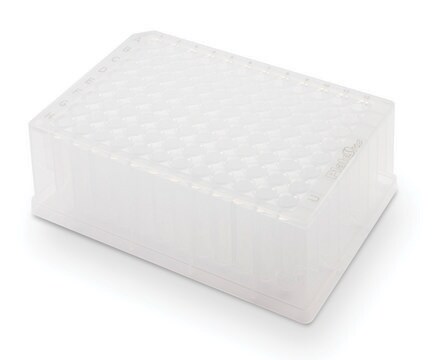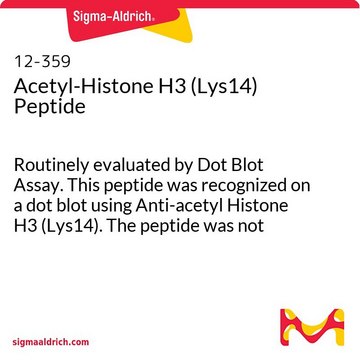SRP2156
STAT1 human
recombinant, expressed in insect cells, ≥70% (SDS-PAGE)
Synonym(s):
DKFZp686B04100, ISGF-3, STAT91
Sign Into View Organizational & Contract Pricing
All Photos(1)
About This Item
UNSPSC Code:
12352200
NACRES:
NA.26
Recommended Products
biological source
human
recombinant
expressed in insect cells
assay
≥70% (SDS-PAGE)
form
frozen liquid
mol wt
~89.1 kDa
packaging
pkg of 10 μg
storage condition
avoid repeated freeze/thaw cycles
concentration
600 μg/mL
color
clear colorless
NCBI accession no.
UniProt accession no.
shipped in
dry ice
storage temp.
−70°C
Gene Information
human ... STAT1(6772)
General description
Signal transducers and activators of transcription 1 (STAT1) gene is mapped to human chromosome 2q32.2-q32.3. STAT1 protein exists in two isoforms STAT1α and STAT1β with molecular weight of 91kDa and 84kDa, respectively. The encoded protein show ubiquitous expression. STAT1 is a member of STAT family of proteins.
Biochem/physiol Actions
Signal transducer and activator of transcription (STAT) proteins are a family of latent cytoplasmic transcription factors involved in cytokine, hormone, and growth factor signal transduction. Seven members of the STAT family of transcription factors have been identified in mammalian cells: STAT1, STAT2, STAT3, STAT4, STAT5a, STAT5b, and STAT6. STAT proteins mediate broadly diverse biologic processes, including cell growth, differentiation, apoptosis, fetal development, transformation, inflammation, and immune response. Receptor-recruited STATs are phosphorylated on a single tyrosine residue in the carboxy terminal portion. The modified STATs are released from the cytoplasmic region of the receptor subunits to form homodimers or heterodimers through reciprocal interaction between the phosphotyrosine of one STAT and the SH2 domain of another. Following dimerization, STATs rapidly translocate to the nucleus and interact with specific regulatory elements to induce target gene transcription. Recently, STAT-1 has been implicated in modulating pro- and anti-apoptotic genes following several stress-induced responses. These effects are dependent on STAT-1 phosphorylation on serine-727 and require the C-terminal transactivation domain of STAT-1 to enhance its pro-apoptotic effect or inhibit its anti-apoptotic effects. The STAT-1 C-terminal domain has been demonstrated to be important for protein-protein interaction with other transcriptional activators. The reports that STAT-1-deficient mice develop spontaneous and chemically induced tumours more rapidly compared to wild-type mice and that STAT-1-deficient cells are more resistant to agents that induce apoptosis strongly support the argument that STAT-1 acts as a tumour suppressor.
Signal transducer and activator of transcription 1 (STAT1) plays a vital role in interferon (IFN) signaling. STAT1 undergoes phosphorylation on serine-727. This Phospho-Stat1 regulates pro- and anti-apoptotic genes following several stress-induced responses. STAT-1 interacts with p53 and promotes p53-mediated transcriptional gene activity and apoptosis. STAT-1 is an essential factor of stress-induced and DNA damage-induced checkpoint pathways and thus, acts as a tumour suppressor. STAT-1 functions as a pro-apoptotic factor in cardiac myocytes, brain or liver exposed to ischaemia–reperfusion injury. Thus, inhibition of STAT-1-activated pathway by epigallocatechin-3-gallate (EGCG) can be considered as a potential therapeutic method against ischaemic tissue injury. Repression of STAT-1 expression by human papillomavirus (HPV) oncoproteins E6 and E7 at transcription level is essential for genome amplification and maintenance of episomes, which is suggested to have a crucial role in viral pathogenesis.
Physical form
Clear and colorless frozen liquid solution
Preparation Note
Use a manual defrost freezer and avoid repeated freeze-thaw cycles. While working, please keep sample on ice.
Storage Class
10 - Combustible liquids
wgk_germany
WGK 1
flash_point_f
Not applicable
flash_point_c
Not applicable
Certificates of Analysis (COA)
Search for Certificates of Analysis (COA) by entering the products Lot/Batch Number. Lot and Batch Numbers can be found on a product’s label following the words ‘Lot’ or ‘Batch’.
Already Own This Product?
Find documentation for the products that you have recently purchased in the Document Library.
Jana Petersen et al.
Molecular immunology, 114, 30-40 (2019-07-25)
Heterozygous gain-of-function (GOF) mutations in the cytokine-regulated transcription factor STAT1 (signal transducer and activator of transcription 1) lead to chronic mucocutaneous candidiasis (CMC). However, the molecular basis of these pathogenic missense mutations is largely unknown. In this study, we characterized
Assignment1 of STAT1 to human chromosome 2q32 by FISH and radiation hybrids.
Haddad B
Cytogenetics and Cell Genetics, 83(1-2), 58-59 (1998)
Epigallocatechin-3-gallate inhibits STAT-1 activation and protects cardiac myocytes from ischemia/reperfusion-induced apoptosis.
Townsend PA
Faseb Journal, 18(13), 1621-1623 (2004)
Suppression of STAT-1 expression by human papillomaviruses is necessary for differentiation-dependent genome amplification and plasmid maintenance.
Hong S
Journal of Virology, 85(18), 9486-9494 (2011)
STAT-1: a novel regulator of apoptosis.
Stephanou A and Latchman DS
International Journal of Experimental Pathology, 84(6), 239-244 (2003)
Our team of scientists has experience in all areas of research including Life Science, Material Science, Chemical Synthesis, Chromatography, Analytical and many others.
Contact Technical Service





